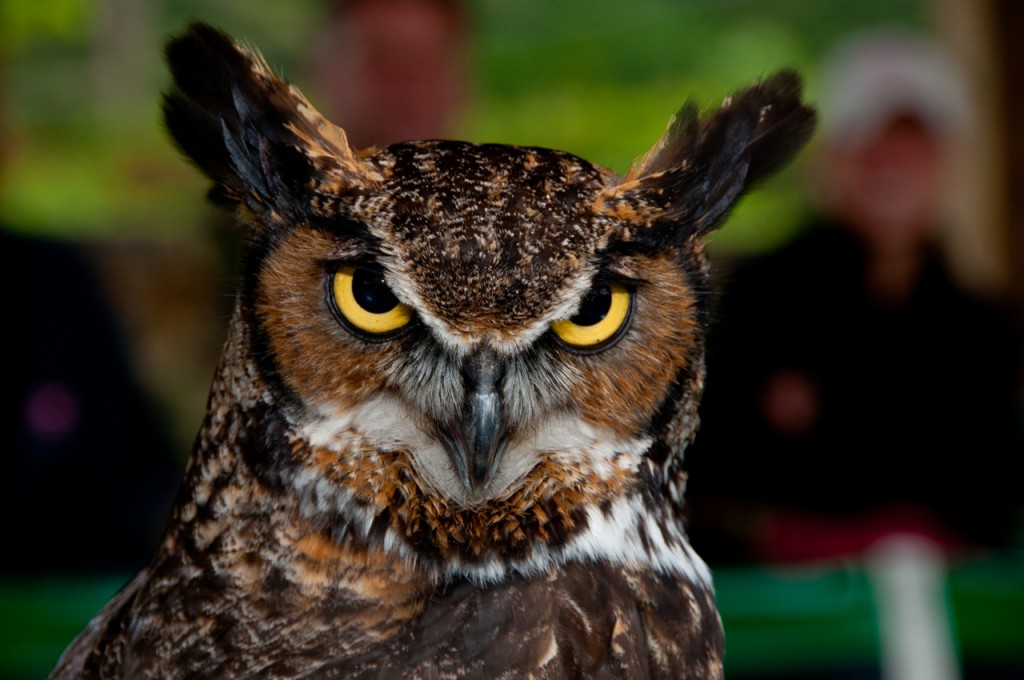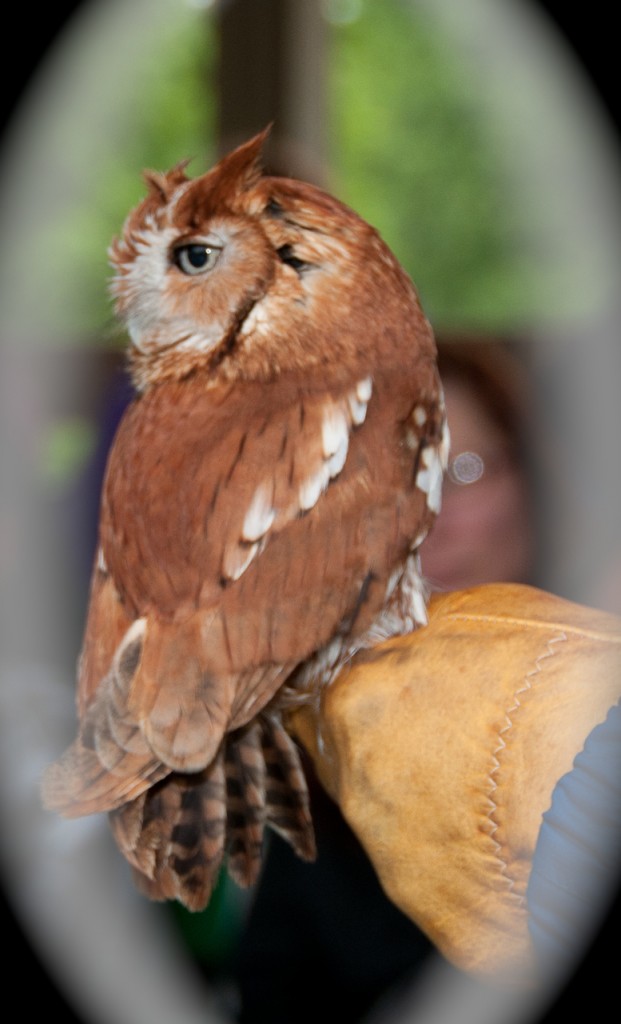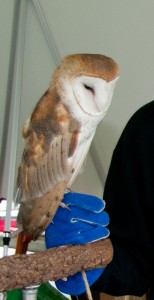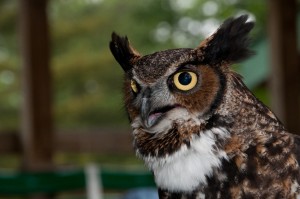Something to Hoot About: Owls
Owls enjoy our special fascination. Perhaps it’s because they are a caricature of us: with upright, sometimes cuddly-looking, vertical posture, big, cheeky and expressive faces with large, emotive eyes, and cute little ears. But they really are the bird version of a wolf in sheep’s clothing: like a cat with wings, they are skillful predators designed for darkness.
Owls command the night. They are the second shift in a rodent’s worst nightmare, taking over the daytime responsibilities of raptors (hawks and falcons) to hunt mice, rats, voles and moles, and other small mammals, and not give a hoot in the process.
Several evolutionary biological adaptations have made owls the masters and mistresses of low-and-no light hunting. Foremost is the position of an owl’s eyes. Their large eyes, located forward on their faces, with beaks curved downward so as to not obstruct vision, gives them a wide, overlapped sight and field of view. It’s called binocular vision and is a measure of how much each eye can see the same area. Owls have about a 120-degree binocular field of view. For comparison, humans have about a 140-degree binocular field of view.
Equally important is the ability to see three-dimensionally (stereoscopic vision) for enhanced depth perception. Good stereoscopic vision is very dependent on how far apart eyes are set on a head. The flat, disk-like face of an owl allows for a wide separation between the eyes, and, as a result, about 70% of an owl’s field of view is seen stereoscopically; again similar to the stereoscopic ability of a human.
But good eyesight at night is also dependent on how an eye is constructed. An owl retina contains numerous rod-shaped photoreceptors enabling acute low-light vision, and the larger owl eye means a larger cornea, lens, and muscular iris to adjust the pupil to a wide range of limited light conditions. Good night vision alone, however, is not the only reason for an owl’s hunting prowess.
Owls have stupendous hearing. They have enormous ear openings concealed behind the edges of their facial disks. The tufted “ears” on several species of owls, including our local Great Horned Owls, are not ears and have nothing to do with hearing–the tufts are used to signal moods: if held vertically the owl is happy, if held horizontally, it’s a sign the bird is crabby.
Owls can adjust the shape of their large ear aperture — like us cupping our hands behind our ears to hear better – by moving cartilage around the ears’ opening. Owls can even direct their hearing attention backwards. Studies have shown that owls have particularly astute hearing for higher frequencies, such as a squeaking mouse or the rustlings of a scurrying vole.
Silent and secretive flight adds to an owl’s lethal hunting tool kit. An owl can appear like an apparition out of nowhere and disappear in a heartbeat, much to the chagrin of targeted prey. Highly camouflaged plumage and an aerodynamic physique combine to make a hunting owl truly stealthy.
An owl’s short and wide wings, coupled with small body weight, make them remarkably maneuverable fliers. Our region’s Great Horned Owl for example, is two feet tall and has a five-foot wingspan, but only weighs five pounds. And, unlike all other birds, you cannot hear the wing beats of an owl on the prowl. The furtiveness of silent flight is made possible by finely fringe-edged pinion feathers that are covered with velvet pile thus dampening all sound of the wings moving through air.
Because of owls’ clandestine behavior, and the fact that they go to work after we’ve gone to bed, most folks know very little about owls.
Five species of owls regularly occur in southwestern Illinois.. Four of the species are year-round residents. Barred Owls, rich baritone hooters, are common throughout the area. Great Horned Owls, the largest owl in our region, can be found primarily in our deep woodlands. Eastern Screech-Owls, small, Robin-sized birds, frequent a variety of habitats. And, increasingly hard-to-find Barn Owls, ghostly-appearing with heart-shaped white faces, prefer open fields and grass lands.
Short-Eared Owls are wintertime-only visitors to our area. Although fewer in numbers than our year-round residents, they can be easier to spot. They prefer to hunt in the twilight of dusk or dawn, and will sometimes even hunt in broad daylight. Easily mistaken for a Northern Harrier (Marsh Hawk), they buoyantly cruise and hover over open farm grounds and grass lands.
Three additional owl species, from the far north country, will occasionally and rarely visit our region in winter: Long-Eared Owls, Northern Saw-whet Owls and the beautiful Snowy Owls, made famous recently by Hedwig, Harry Potter’s companion and familiar in the popular book and movie series. A well-remembered Snowy hung out in downtown Red Bud for a couple of days in March 1976; this year a Snowy Owl stayed near Red Bud for nearly a month (see link to the related CLIFFnotes article, below). And, a vagrant Burrowing Owl, from the American Southwest, was spotted near Fish Lake in Monroe County in May of 2010.
Clifftop, Kaskaskia Valley Audubon Society, and the Monroe County Extension Service co-hosted a program as a part of the “Meet the Neighbors” natural history seminar series on Saturday, February 11th. Treehouse Wildlife Center presented a program on the natural history, habits and habitats of our owl neighbors at the Monroe County Annex, 901 Illinois St., in Waterloo, from 3 to 5 PM. Live owls assisted with the program.
Clifftop, a local nonprofit organization, is focused on preserving and protecting area bluff lands.
A version of this article appeared in the January 20, 2012 edition of the Monroe County Independent.
© 2012 all content rights reserved, Clifftop NFP.
To read about and view photos of a Snowy Owl in our area, please look at: The Ghost of Hedwig.
To read about and view photos of creating new homes for Barn Owls, please look at Barn Owls in Search of Homes.
Comments are currently closed.




